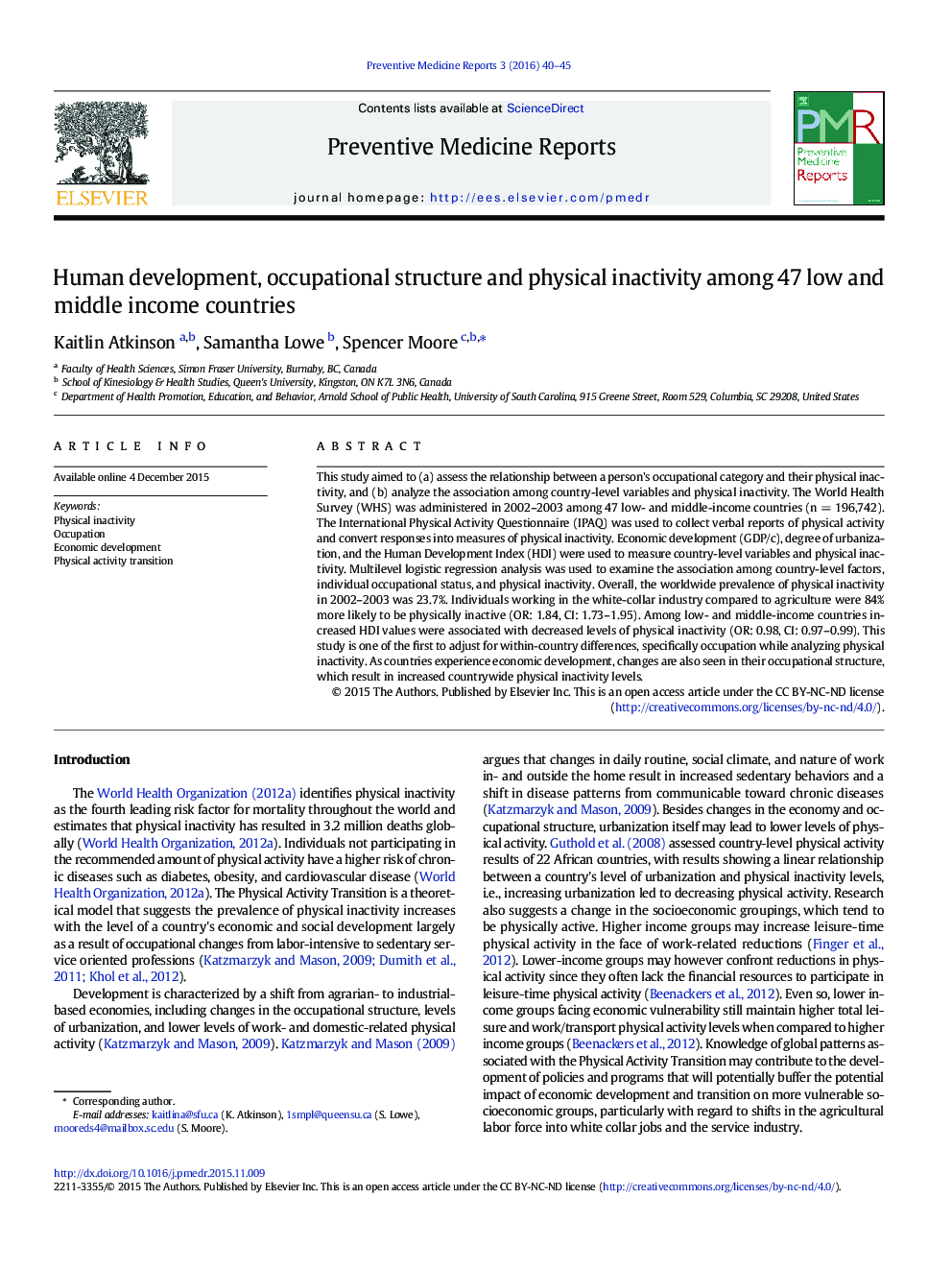| کد مقاله | کد نشریه | سال انتشار | مقاله انگلیسی | نسخه تمام متن |
|---|---|---|---|---|
| 4202329 | 1609089 | 2016 | 6 صفحه PDF | دانلود رایگان |
• We analyzed the relationship between occupation and physical inactivity.
• The IPAQ was used to measure the level of physical inactivity.
• All occupations other than agriculture were more likely to be physically inactive.
• Gender, income and urban/rural are positively associated with physical inactivity.
• The HDI was inversely associated with physical inactivity.
This study aimed to (a) assess the relationship between a person's occupational category and their physical inactivity, and (b) analyze the association among country-level variables and physical inactivity. The World Health Survey (WHS) was administered in 2002–2003 among 47 low- and middle-income countries (n = 196,742). The International Physical Activity Questionnaire (IPAQ) was used to collect verbal reports of physical activity and convert responses into measures of physical inactivity. Economic development (GDP/c), degree of urbanization, and the Human Development Index (HDI) were used to measure country-level variables and physical inactivity. Multilevel logistic regression analysis was used to examine the association among country-level factors, individual occupational status, and physical inactivity. Overall, the worldwide prevalence of physical inactivity in 2002–2003 was 23.7%. Individuals working in the white-collar industry compared to agriculture were 84% more likely to be physically inactive (OR: 1.84, CI: 1.73–1.95). Among low- and middle-income countries increased HDI values were associated with decreased levels of physical inactivity (OR: 0.98, CI: 0.97–0.99). This study is one of the first to adjust for within-country differences, specifically occupation while analyzing physical inactivity. As countries experience economic development, changes are also seen in their occupational structure, which result in increased countrywide physical inactivity levels.
Journal: Preventive Medicine Reports - Volume 3, June 2016, Pages 40–45
